Foreground / background
Often one collects the findings and later considers whether some should be considered “in the background” to the particular diagnosis. The software supports this mode of thinking through its pause/play feature. By default, all entered findings are considered in the foreground, but you can click the black pause button to put a finding into the background, i.e., visible but grayed out and not considered in creating the differential diagnosis and not considered to have any pertinence. A finding in the background remains on the list, allowing you to quickly toggle each on and off. In this case, the family all appeared to have bushy eyebrows, so we weren’t sure of its significance, and paused the finding.
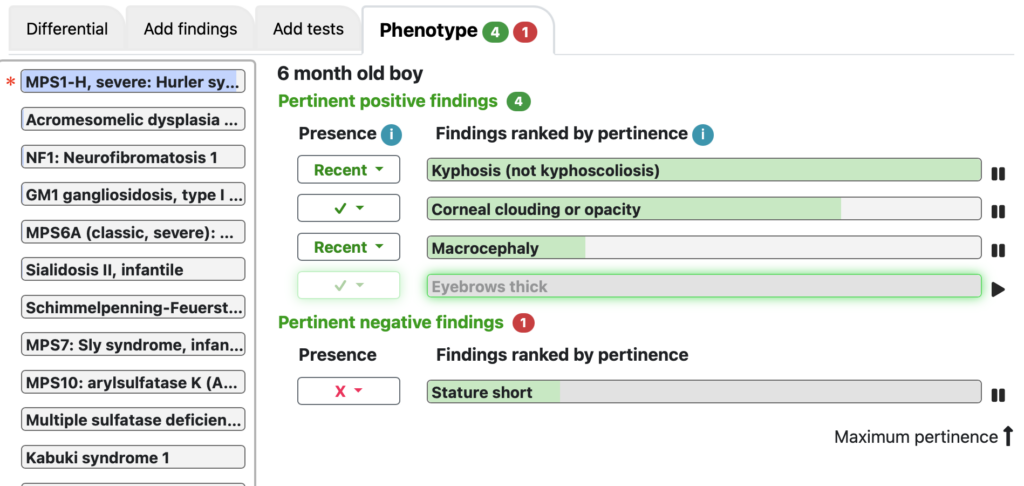
Pertinence of findings in the Phenotype
In medicine, “pertinence” of a finding is a well-understood concept. Here, it is quantitated using computational statistics as the extent to which the finding and its onset or absence contribute to the probabilities in the differential diagnosis. If a finding has high pertinence you should have high confidence that the finding is properly assessed. For example, if you are considering MPS1, you might ask the radiologist to specifically comment on the presence of dysostotic thickening of the long bones.
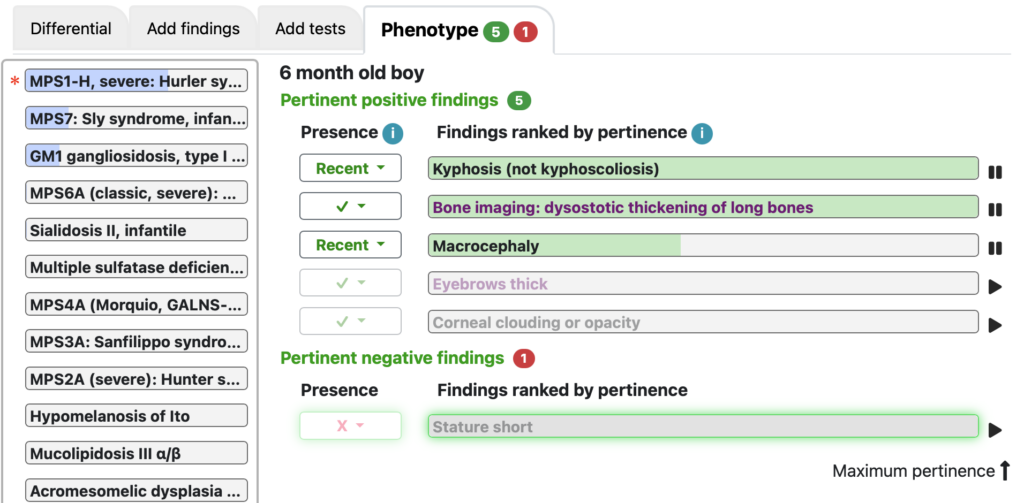
Explainability
Select a disease and then click the blue X on the black navigation bar to see the fit between the patient and what the database knows about the disease – this is the reveal of the software’s logic, so you can judge if you agree. It is the most important way the software is not autonomous.
On the left is shown the list of findings you entered about the patient. On the right are the frequency and timing of onset of each of those findings in the selected disease.
- The length of the overall bar on the right, including the black, brown, and purple parts, indicates the frequency of the finding in the selected disease.
- The colors then indicate the onset, where black is onset during the indicated time period. In both MPS1 and GM1 gangliosidosis, >90% of the patients are ultimately short, but in MPS1 they become short later (very little black, lots of purple for later), while in GM1 gangliosidosis they are short by now (8 months old; lots of black).
- The fact that this patient is not short does not rule out GM1 gangliosidosis, but it makes it a less good fit than MPS1. In general, a good candidate for the diagnosis has lots of black for the pertinent positive findings and little black for the pertinent negative findings.
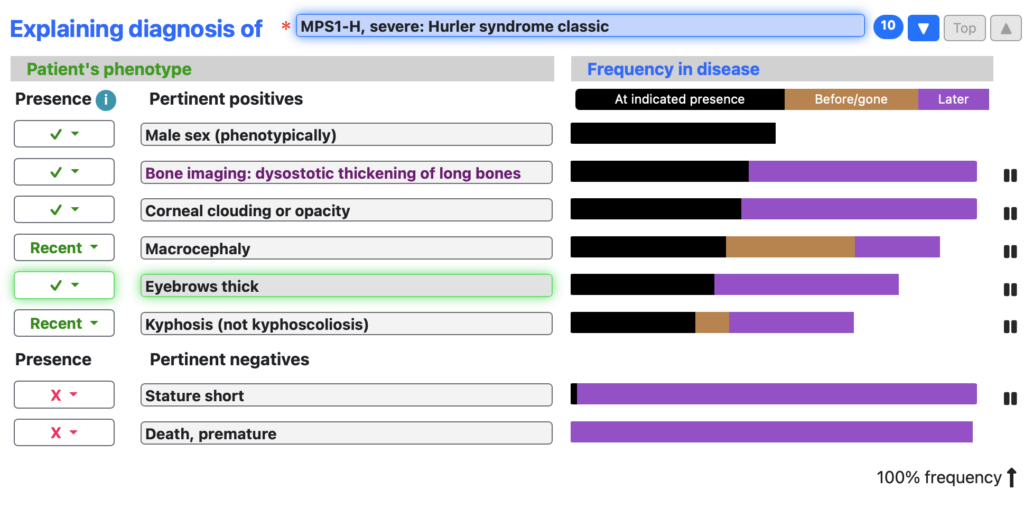
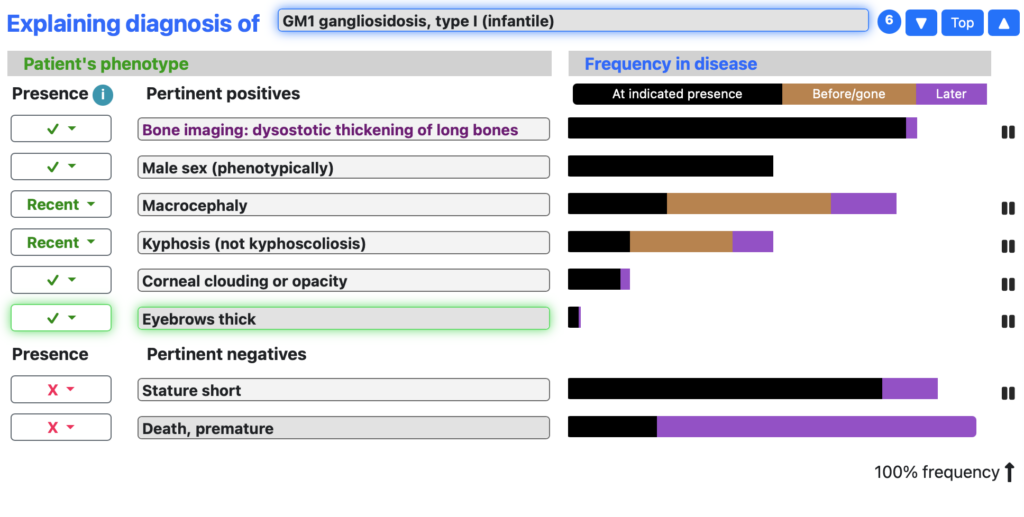
The incidence of a disease matters, but here, as indicated in the blue circle at the top, these diseases have similar incidences of 10/million and 6 per million respectively.
Profile finding in all diseases
If you have a striking finding, such as corneal clouding in a 6-month-old boy, you might ask, “What diseases have this finding?” Select the finding and click the green triangle on the top black navigation bar to see the ‘Profile finding‘ display. You see a list with the frequency of its presence at the patient’s age. You can use the ‘View Younger’ or ‘View Older’ buttons to view the frequencies at different ages.
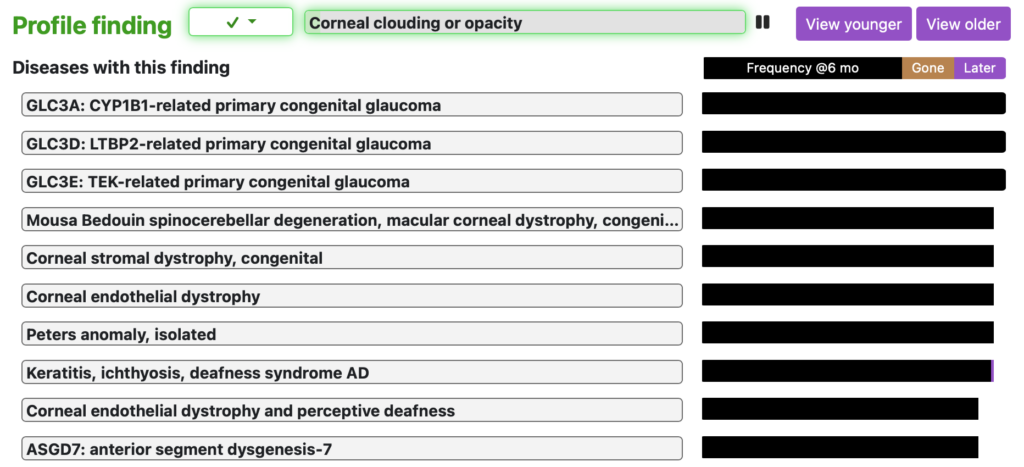
Assess finding in the differential diagnosis
If you have a striking finding, such as corneal clouding in a 6-month-old boy, you might ask, “What diseases have this finding among diseases in the differential diagnosis?” Select the finding and click ‘Assess finding,’ indicated by a green “V” on the black navigation bar. You see a list showing the frequency of its presence in diseases in the differential diagnosis at the patient’s age. You can use the ‘View Younger’ or ‘View Older’ buttons to view the frequencies at different ages.
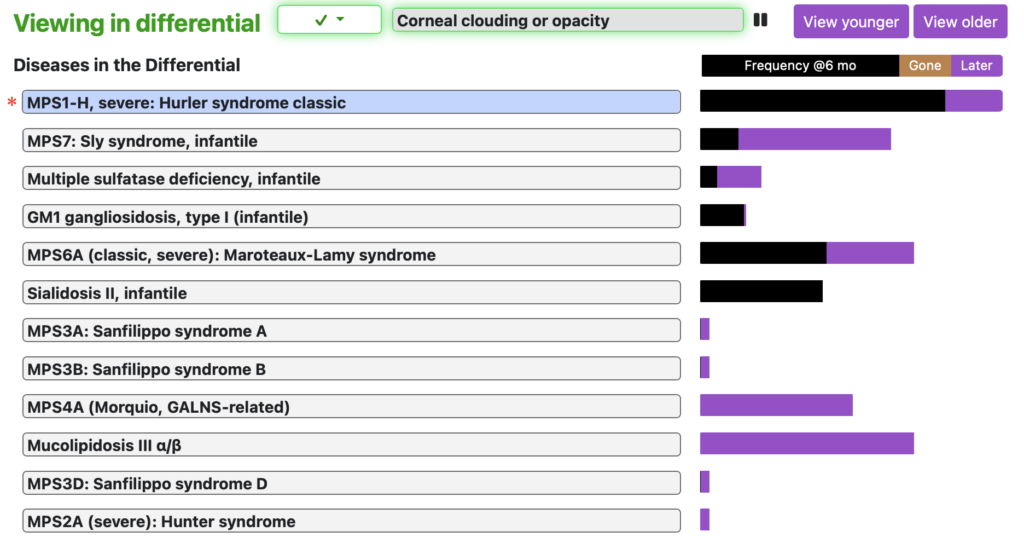
Links
You can get outside material about a finding or disease by selecting it to make it eactive and then clicking the link icon on the black navigation bar. Resources include GeneReviews, OMIM, Orphanet, articles, images, and calculators, such as the much-used SimulConsult head circumference, stature, and weight calculators.
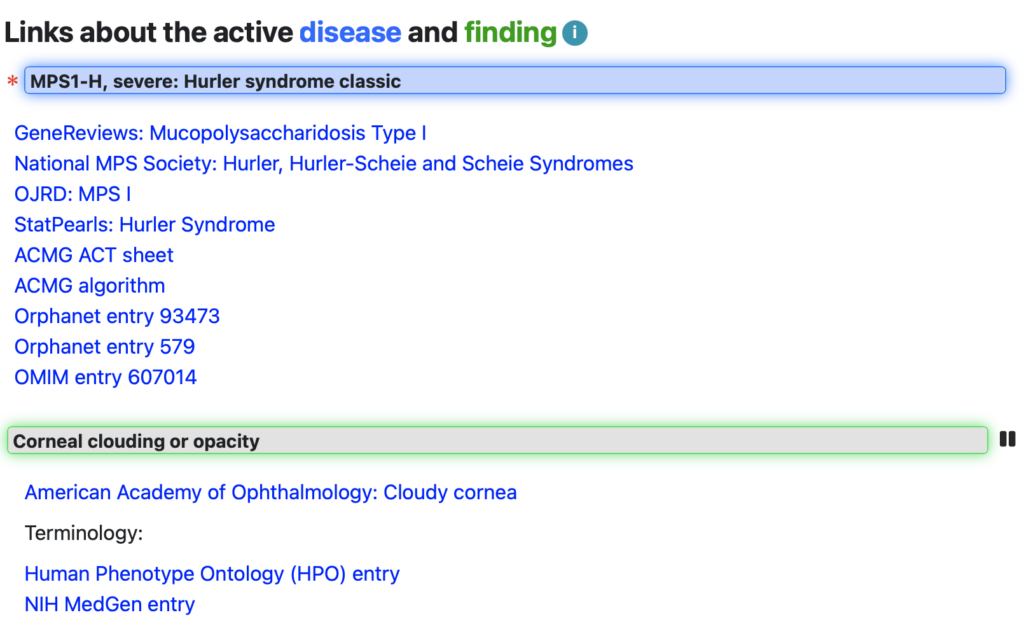
Plan
For identifying the most useful tests, use the Dx/Add tests. For treatment options, use disease Links to the latest resources on treatment.
